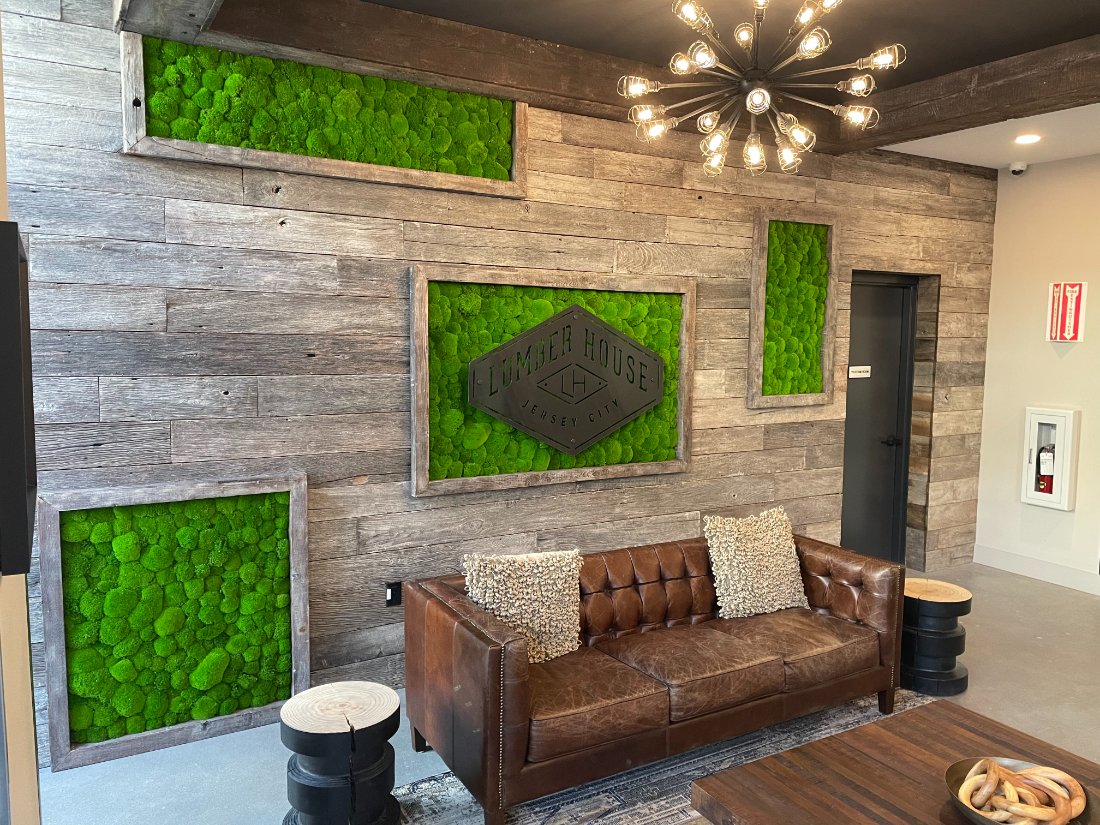



Where Nature Meets Dining Culture
In the heart of busy cities, diners are discovering something more than just good food, they’re finding refuge. Picture walking into a café where the walls are alive with soft textures of preserved moss, where natural light pours over reclaimed wood tables, and where even the air feels fresher. This is biophilic design in action, and it’s quietly transforming cafés and restaurants into places of restoration and delight.
More than a fleeting trend, biophilic design is reshaping how we experience dining. It speaks to a deeper desire to reconnect, with nature, with others, and with ourselves. It’s about stepping into a space that feels grounded, vibrant, and inherently human.
-

-
The Emotional Impact of Preserved Moss Walls
At the heart of this transformation is the preserved moss wall, a living-looking feature that brings both serenity and texture into indoor spaces. Unlike living walls that require constant maintenance, preserved moss offers a no-maintenance alternative with the same visual and emotional benefits. It’s real moss that has been carefully treated to retain its lush appearance and feel, without the need for sunlight or watering.
In cafés and restaurants, a preserved moss wall does more than catch the eye. It softens acoustics, dampens harsh noise, and creates an intimate, calming environment where conversations flow more easily and meals are savored with more presence. Guests often can’t explain why they feel better, they just do.
-
Artificial Greenery with Authentic Appeal
Where live or preserved plants aren’t practical, artificial greenery steps in as a compelling design element. Today’s artificial plants are crafted with remarkable detail, offering lush, natural textures without the upkeep. For restaurants with limited light or foot traffic concerns, artificial green walls provide the perfect solution: they look and feel vibrant, while requiring zero care.
Used thoughtfully, artificial greenery can transform a stark dining area into a lush retreat. Vertical installations, overhead foliage, and custom-designed panels help define zones within open floorplans, guiding guests through a sensory journey with each step.
-

-

-
Designing for Connection and Sustainability
Today’s restaurateurs are not only designing for beauty, they’re designing for meaning. Many are integrating sustainability into their concept from the ground up, choosing natural or recycled materials, investing in high-quality artificial greenery for longevity, and working with local artisans and farmers to deepen their ties to community and place.
The decision to use preserved moss walls or artificial green panels is often part of a broader commitment to sustainability. These installations avoid the water and energy demands of living walls while still bringing nature’s essence indoors. They’re eco-conscious, long-lasting, and visually impactful.
-
The Future of Hospitality is Green
Biophilic design is more than a design trend, it’s a shift in how we think about space and experience. In cafés and restaurants, it adds soul to a room. It slows people down. It invites them to stay a little longer. With the thoughtful integration of preserved moss walls and high-quality artificial plants, the future of dining becomes not just more beautiful, but more meaningful.
So the next time you walk into a restaurant and feel a little more relaxed, a little more alive, it might just be the quiet power of nature at work, living on the walls.
-

Get In Touch
-
Customer service
info@naturalist.us -
Follow us








